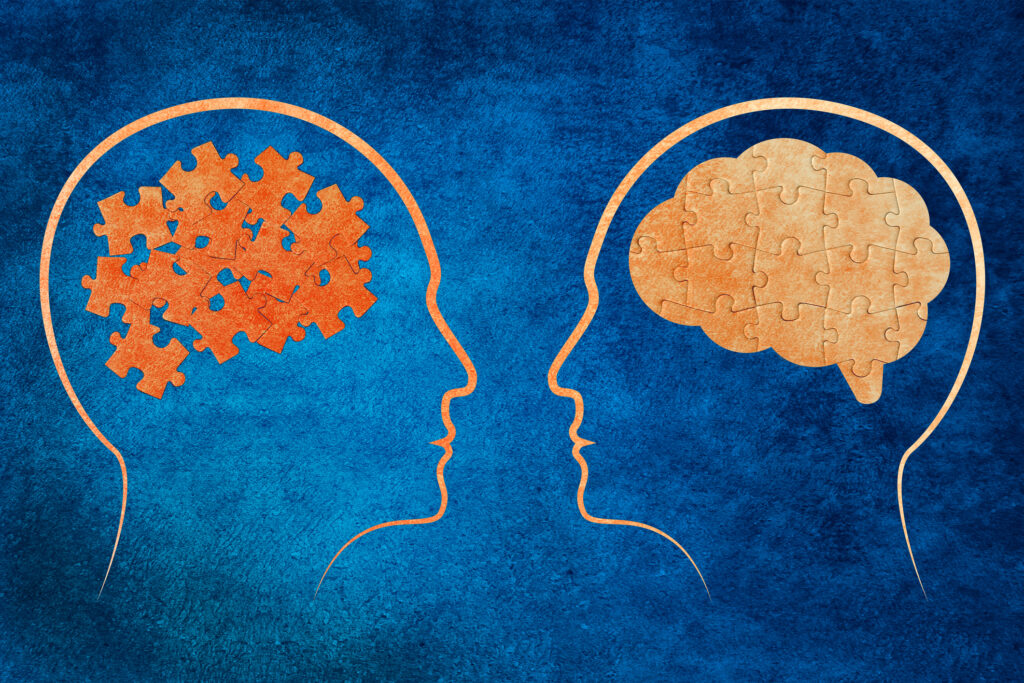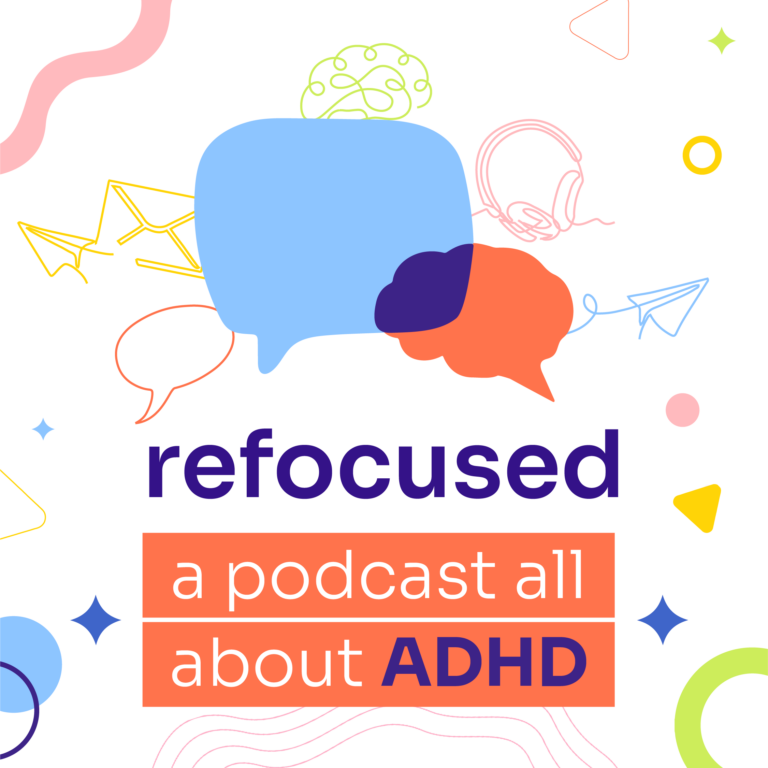
By Sophia Auld
Diagnosing ADHD is not like diagnosing a disease such as diabetes or arthritis, where a blood test or scan can reveal whether you have the condition.
Today, medical experts diagnose ADHD by analyzing whether a person displays a number of symptoms or behaviors on a recognized ADHD checklist. Medical experts also talk to a patient about their medical history and functioning. They may also talk with friends, family and teachers about the person’s behaviors.
There is no blood test or imaging that can show a person has ADHD.
Still, research increasingly shows the brains of people with ADHD can look and function differently from the brains of those without ADHD. As medical imaging, artificial intelligence and machine learning technologies continue to improve, could a brain scan eventually be all it takes to diagnose ADHD?
The answer seems to be: possibly. But we’re far from that point. There are also issues around using brain scans in ADHD assessment that must be considered. These include the cost of scans, the impact of radiation, and lack of consistency in findings from ADHD brain imaging research.
Types of ADHD Brain Scans
To understand the role of brain imaging in ADHD, it’s helpful to know more about the types of scans used.
Some scans capture static images of the brain, and research has sometimes found the brains of people with ADHD look different to those of people without it. For example, a 2017 study of more than 3,200 children and adults found that on average, people with ADHD had smaller brains, and that five specific brain areas were smaller, than those in the control group. Significantly, the differences were most pronounced in children and less evident in adults.
Results like this help confirm ADHD is a physiological disorder, experts say.
“They’re valuable for understanding that there’s a neurological basis to ADHD, which is important for dispelling misconceptions that it’s purely psychiatric,” explains Mitch Clionsky, Ph.D. , a clinical neuropsychologist and author from Springfield, Mass. “It has to do with how the brain is wired, or perhaps didn’t fully get wired over the course of development.”
Clionsky adds that about 50% of people with childhood ADHD no longer meet diagnostic criteria in adulthood. This is partly because their brains have matured, which may help explain why structural differences in adult brains are less obvious in studies that scan people’s brains.
Ronald Brown, PhD, professor and dean of the Department of Integrated Health Sciences at the University of Nevada, Las Vegas, agrees neuroimaging-based research has added credibility to the disorder.
“It’s given us great information,” he says. “It’s validated things we theorized about ADHD.”
Watching the ADHD Brain in Action
A common type of scan researchers use — for imaging the brain or any part of the body — is magnetic resonance imaging, or MRI. An MRI machine uses powerful magnets and radio waves to create detailed pictures of the scanned area.
A specific type of MRI, known as functional magnetic resonance imaging, or fMRI, can “see” the brain at work by measuring things like blood flow or oxygen uptake in the brain. Clionsky says this can highlight which brain areas are active while people perform different tasks.
“For example, you might be told to hit the left button on a controller every time you see an X and the right button when you see a Y,” he says. “This uses a whole bunch of different brain areas.”
In people with ADHD, these scans sometimes show altered activity in the brain’s frontal lobes, Clionsky says, “which makes sense because these areas are involved in ADHD symptoms.”
Interestingly, the frontal lobes are particularly sensitive to dopamine and norepinephrine — the brain chemicals ADHD medications help to regulate. “And when you treat people with ADHD effectively with medications and put them back in the scanner, their brains look the same as the people without ADHD,” Clionsky says.
From Research to the Clinic
Clionsky adds that while brain scans are valuable for ADHD research, they’re not routinely used in the clinic. He explains they don’t provide accurate enough information on an individual basis.
This is because “noise” (random findings that arise from the investigation process and from the scans) can distort the results. But when you average results from brain scans of multiple people with well-defined ADHD, the noise gets cancelled out.
“What you’re left with is a signal,” Clionsky says, “and the signal you get from, say, 10 people with ADHD looks different to the signal you get from people without ADHD. That’s pretty cool from a scientific point of view, but it doesn’t tell me what’s happening in the brain of the person sitting across my desk.”
Brown agrees scans are not “clinically feasible or relevant” and have downsides that must be considered.
There is radiation exposure with some types of scans, and they can be very expensive, he says.
Plus, Brown says of scans: “There’s the burden on the patient, especially for someone with ADHD — because you have to hold still. You could also come up with additional information that would require further testing.”
Importantly, experts can already diagnose ADHD effectively by looking at behavior in different situations and getting information from parents and teachers, Brown says.
“We know this approach is reliable, so why do brain scans and risk any health hazards or other issues?” he asks. “It doesn’t make sense from a clinical perspective.”
Moreover, a 2021 review of 40 papers using MRI in ADHD assessment found conflicting research results. The authors concluded that “neuroimaging in ADHD is still far from informing clinical practice.” The Diagnostic and Statistical Manual of Mental Disorders — the handbook that mental health providers use as a guide to diagnosing mental disorders — notes that until research issues like differences in study design, technique and quality are resolved, “no form of neuroimaging can be used for diagnosis of ADHD.”
Technology vs. Humanity
Clionsky stresses the need to weigh technological advances against human considerations. While a scan that might show evidence of ADHD could be comforting for someone with ADHD symptoms, lack of findings could have the opposite effect.
“Imaging may not show an ADHD signal, but I’ve still got a patient who’s losing their job, or their marriage is on the rocks because they’re struggling to pay attention,” Clionsky says. “There’s a danger that relying too much on imaging could take away from the human element.”
Imaging findings also have limitations, Clionsky says. “We see people with perfectly normal-looking hearts who die from heart attacks,” he says. “As we get better at seeing the smaller pieces, sometimes we risk losing sight of the larger picture.”
Additionally, neuroimaging cannot assess the behavioral symptoms of ADHD, such as procrastination or disorganization. Says Brown: “ADHD is often associated with problems like peer relationship issues and learning difficulties. A scan is not going to get at that.”
Testing for Better Treatment
Limitations aside, could brain imaging eventually help clinicians better treat ADHD?
Brown explains behavior management and medications are the two evidence-based approaches for managing ADHD. While scan results don’t show providers how to design behavioral therapies that might help, Brown believes they could potentially inform pharmacological therapy.
“We know stimulants work fairly well in about 80% of children with ADHD,” Brown says. “And if one doesn’t work, you use another stimulant. Perhaps imaging could help us direct the medications at specific neurotransmitters.”
Clionsky agrees brain scans could eventually help clinicians better see the physiological side of ADHD, which could take the guesswork out of prescribing. “As opposed to a trial-and-error approach, they may help us see the degree to which someone will respond to medications,” he says.
The Future of ADHD Brain Scans
So, will scans ever be a key diagnostic tool in ADHD? Clionsky believes neuroimaging will ultimately be used routinely in ADHD diagnosis.
“Scans are getting increasingly more powerful and artificial intelligence and big data analytics will enable us to factor out background noise,” he says.
Collaborations like those of the ENIGMA ADHD working group are already working on compiling, sharing and analyzing data from studies across multiple sites globally.
Brown believes differently.
“ADHD is already the best researched topic in all of child psychiatry,” he says. “There’s a lot of data and a large evidence base. We don’t yet have a biological marker for ADHD like we do for high cholesterol or some cancers. Plus, ADHD is fairly easy to identify clinically and there are treatment algorithms for managing it, so you wouldn’t use scanning for identifying the disorder.”






